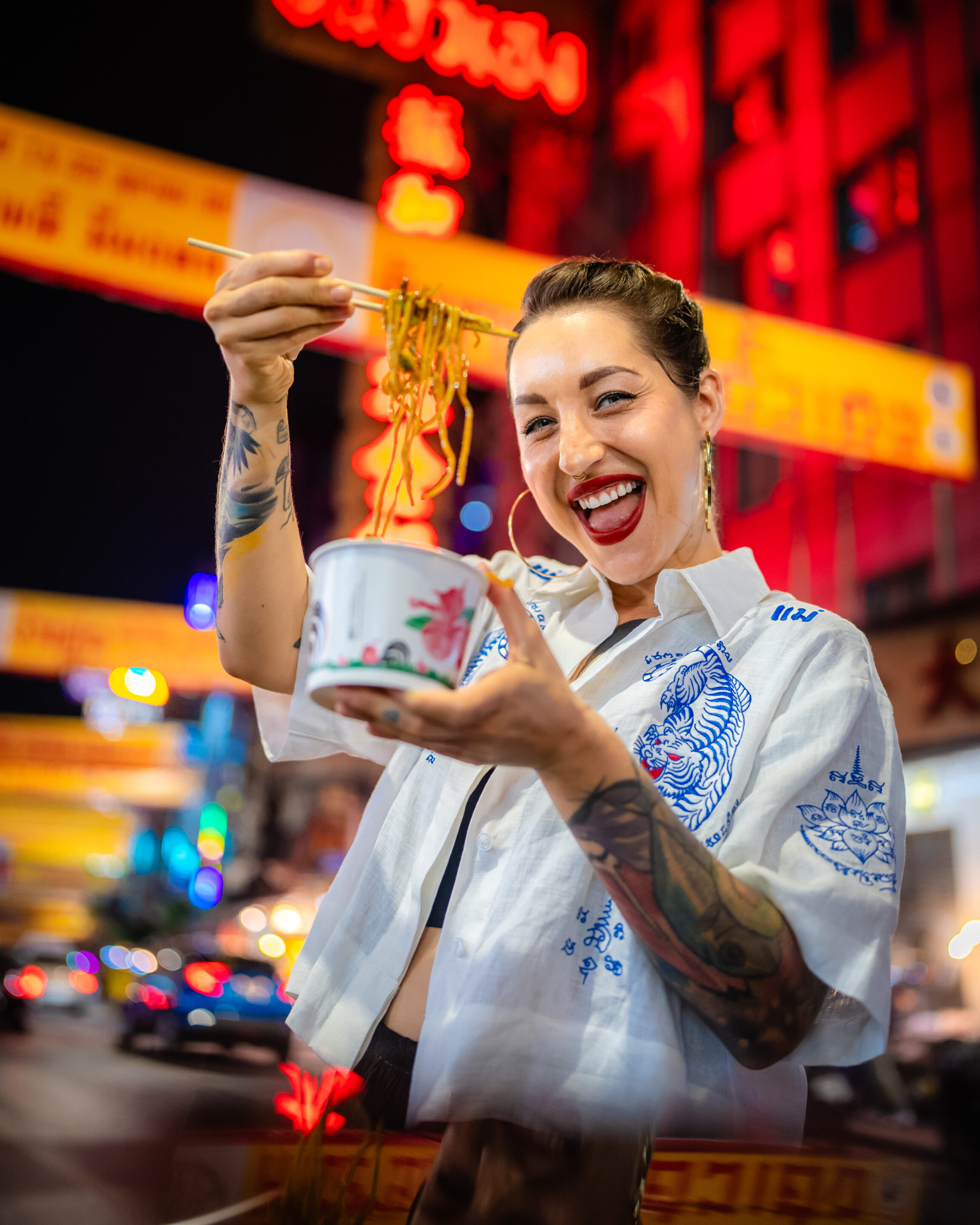As a Bangkok photographer, one of the most fundamental decisions I face when capturing street scenes is whether to shoot in black and white or color. Each aesthetic has its own unique qualities and evokes different emotions, and choosing the right one can make a significant impact on the final image. In this article, we’ll explore the characteristics of black and white and color street photography, and discuss how to choose the right aesthetic for your vision and message.
The Timeless Elegance of Black and White:
Black and white photography has a long and storied history, and it remains a popular choice for street photographers today. By stripping away color, black and white images draw attention to the fundamental elements of composition, such as light, shadow, texture, and form. This can create a sense of timelessness and elegance, as well as a more abstract and symbolic representation of the world.
When to Choose Black and White:
There are several situations where black and white may be the best choice for your street photos:
1. When the scene has strong contrasts and textures that would be lost in color.
2. When you want to create a sense of nostalgia, mystery, or drama.
3. When the colors in the scene are distracting or do not contribute to the overall message.
4. When you want to emphasize the emotional or psychological aspects of the subject.
The Vibrancy and Realism of Color:
On the other hand, color photography offers a more literal and realistic representation of the world, capturing the vibrancy and diversity of the streets in all their glory. Color can evoke strong emotions and associations, and can help to create a sense of place and time that is lost in black and white.
When to Choose Color:
There are several situations where color may be the best choice for your street photos:
1. When the colors in the scene are an integral part of the story or message.
2. When you want to capture the energy and chaos of the streets in a more literal way.
3. When the lighting conditions are particularly beautiful or interesting.
4. When you want to create a sense of immediacy and presence in the viewer.
Mixing and Matching:
Of course, there is no hard and fast rule that says you have to choose between black and white and color. In fact, some of the most powerful street photography portfolios use a mix of both aesthetics, depending on the needs of each individual image. By being open to both possibilities and experimenting with different approaches, you can create a more dynamic and varied body of work that showcases the full range of your vision and skills.
Developing Your Own Style:
Ultimately, the choice between black and white and color is a personal one that depends on your own artistic vision, preferences, and goals as a street photographer. Some photographers are drawn to the classic look of black and white, while others are energized by the vibrancy and realism of color. The key is to develop your own unique style that reflects your personality, experiences, and perspective on the world.
Post-Processing Considerations:
Regardless of whether you choose to shoot in black and white or color, post-processing plays a crucial role in achieving the final look and feel of your street photos. With digital photography, it’s easier than ever to convert color images to black and white, adjust contrast and tones, and fine-tune the overall aesthetic of your work. However, it’s important to approach post-processing with restraint and intentionality, and to avoid over-manipulating your images in a way that detracts from their authenticity and impact.
Storytelling and Emotional Impact:
At the end of the day, the most important consideration when choosing between black and white and color is how it serves the overall story and emotional impact of your street photos. Whether you’re capturing a moment of joy, sorrow, or contemplation, your aesthetic choices should enhance and deepen the viewer’s experience of the image, rather than distract from it.
As a Bangkok photographer, I’ve found that the key is to be open to both possibilities and to let the needs of each individual scene guide my decision-making. Sometimes, the stark contrast and timelessness of black and white is the perfect choice for a particular moment, while other times, the vibrancy and energy of color is what the image demands.
Conclusion:
In the end, there is no one “right” answer when it comes to choosing between black and white and color for your street photos. Both aesthetics have their own unique strengths and weaknesses, and the best choice will depend on a variety of factors, from the lighting and subject matter to your own artistic vision and goals.
As a street photographer, the most important thing is to keep an open mind, experiment with different approaches, and let your instincts guide you in the moment. Whether you prefer the classic elegance of black and white or the vibrant realism of color, the key is to use your chosen aesthetic in a way that enhances the story, emotion, and impact of your images.
So go out there and explore the streets of Bangkok and beyond, and let your camera be your guide as you discover the endless possibilities of black and white and color photography. With practice, patience, and a willingness to take risks and push yourself creatively, you’ll develop your own unique style and voice as a street photographer, and create images that resonate with viewers long after they’ve left your sight.


